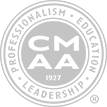A Brief History of Golf

The history of golf is almost just as exciting as playing the game. Going over interesting facts from history, like, where the game was created, how the rules were developed, and much more, will get you excited to learn about golf history and hopefully even start playing!
Where Did Golf Originate
The game of golf as we know it today can be attributed to the Scots, although there are records of several stick and ball games throughout history. As far back as the 13th century, the Dutch played a game where a leather ball was hit with the intention of reaching a target several hundred yards away. The winner would be the player who reached the target with the fewest shots. However, the Scottish sport, which was known as Golf, had one distinction that separates it from similar sports in history: the hole. When we’re talking about the modern game with 18 holes, golf history traces its origins back to 15th century Scotland.
While the Scots formalized the game, historians believe that various cultures had games similar to golf throughout history. The Chinese sport of “chuiwan,” which involved hitting a ball with a stick toward a hole, was played during the Song Dynasty (960-1279). The Romans also played “paganica,” where they used bent sticks to hit a leather ball. Though these games are not direct ancestors of golf, they showcase humankind’s long-standing fascination with striking a ball toward a target.
The History of Golf
The game is first mentioned in an Act of Scottish Parliament in 1457, which called for it to be banned alongside football. King James II of Scotland prohibited the playing of games as it was a distraction from military training, and he felt perfecting archery would be a more worthwhile sporting pursuit. After several more bannings throughout the 15th century and golf being lambasted as an unprofitable sport, restrictions on playing the game were removed with the Treaty of Glasgow coming into effect in 1502.
Today, the Scots are extremely proud of their golfing heritage and their “ancient” courses that continue to pull in thousands of visitors to the small country each year as they continue to play their part in the history of golf.
Following golf’s legalization, the sport gained popularity among Scottish nobility, with King James IV becoming one of its earliest enthusiasts. By the late 16th century, Mary, Queen of Scots, was known to be an avid golfer.
Today, the Scots are extremely proud of their golfing heritage and their “ancient” courses that continue to pull in thousands of visitors to the small country each year as they continue to play their part in the history of golf.
Developing Rules for the Game
The oldest recorded rules for the game date back to the year 1744, where The Honourable Company of Edinburgh Golfers published “Articles and Laws in Playing at Golf.” This ancient piece of golf history, which now remains in the National Library of Scotland, gave fame to the Muirfield club being the longest surviving club in the history of golf.
In 1754, the Society of St. Andrews Golfers—later to become The Royal and Ancient Golf Club of St Andrews—adopted similar rules and became one of the most influential governing bodies of the sport. By the late 19th century, as golf expanded worldwide, The Royal and Ancient (R&A) and the newly formed United States Golf Association (USGA) worked to standardize the rules, ensuring consistency across international play.
Spreading Golf Around the World
Scottish soldiers, immigrants, and expatriates played a pivotal role in the history of golf. They were responsible for spreading the game around the British Isles during the 18th century. However, it wasn’t until the 19th century that the game started to gain an international presence.
The oldest golf courses outside of Britain are to be found in nearby France, with the establishment of the Royal Calcutta Golf Club in 1829 and the club at Pau in 1856. By 1880, golf had spread to Ireland, many other parts of Europe, Australia, New Zealand, Canada, Singapore, and South Africa.
Meanwhile, back in Britain, the game enjoyed increased popularity. By 1880, England had 10 golf courses, which rapidly increased to 1000 by 1914.
During this period, golf’s accessibility began to change. While initially played mostly by the elite, industrialization, and railway expansion allowed middle-class players to participate, leading to the creation of more public courses. This transformation helped golf become a truly global sport.
Adoption in America
There is evidence to suggest that golf was enjoyed in America during the 18th century. A shipment of golf equipment to Charleston, South Carolina in 1739, aided in the founding of the South Carolina Golf Club in 1787 and an advertisement for golf clubs and balls in the Royal Gazette of New York City in 1779.
However, much like other parts of the world who adopted the sport early, no real traction was gained until early 19th century. In 1894 the United States Golf Association was formed to become ambassadors for the game in the states, which by 1910 was host to 267 golf clubs.
One of the key moments in American golf history was the establishment of the first official 18-hole course, the Chicago Golf Club, in 1892. Soon after, major U.S. tournaments like the U.S. Open (1895) and the PGA Championship (1916) were introduced, cementing America’s influence in the sport.
By the mid-20th century, the rise of televised golf and legendary players like Arnold Palmer, Jack Nicklaus, and Tiger Woods helped grow the game’s popularity to unprecedented levels. The United States became home to some of the world’s most famous tournaments, including The Masters at Augusta National and the U.S. Open, further solidifying its dominance in the sport.
Golf in the Modern Era
Today, golf is played worldwide, with professional tours such as the PGA Tour, DP World Tour, and LPGA Tour attracting millions of fans. Advances in golf technology have helped improve the game. Innovations such as improved club design, ball aerodynamics, and swing analysis have all helped golfer performance. With its rich history and continued evolution, golf remains one of the world’s most beloved and enduring sports.
Watch a Video on The History of Golf
Learn more!
Want more tips? If you want to take your game to the next level, contact our team at Keiser University’s College of Golf & Sport Management today. With our dedication and experience, we can elevate your game to new heights together. Give us a call today at 888-355-4465.















I have a project where I chose to do history of golf this helped so much thanks.
thanks joe me 2
I have been told that the Game of Golf has ties to the Masonic Lodge thru the Rose Crox. That it’s simbology being a ROUND of golf will have a “par” score of 36 and is emblematic of the 360 degrees in a circle; There are found 4 quarters (or a 1/4 part) of the circle each having with in it 90 degrees and thus the 9 holes to a game. This math works for me where the there are two par 3 and two par 5 holes and the remaining 7 holes par4 … still 36!
What do you think, any connection to Masonic history?
In the beginning (the start of the game) how many holes were played? Did they play the same hole over and over again?
A golf-like game is, apocryphally,[1][2] recorded as taking place on February 26, 1297, in Loenen aan de Vecht, where the Dutch played a game with a stick and leather ball. The winner was whoever hit the ball with the fewest strokes into a target several hundred yards away. Some scholars argue that this game of putting a small ball in a hole in the ground using golf clubs was also played in 17th-century Netherlands and that this predates the game in Scotland.[3] There are also other reports of earlier accounts of a golf-like game from continental Europe.[4]
This scene in the margings of a late 13th-century manuscript depicts a game with clubs and a ball, possibly the game of kolf referred to by Jacob van Maerlant. It is considered to be the earliest known depiction of a golf-like game.[5] (Bruges Public Library, Ms. 251 f. 149r)
In the 1261 Middle Dutch manuscript of the Flemish poet Jacob van Maerlant’s Boeck Merlijn mention is made of a ball game “mit ener coluen” (with a colf/kolf [club]). This is the earliest known mention in the Dutch language of the game of colf/kolf as played in the Low Countries.[6][7]
This also helped me
These Origins are amazing facts!
i agree with joe
i agree with joe
this helped me
this helped me too, thanks.
This helped a lot, innit joe?
Yea this really helped me to
I am working on a project:)
I’m pleased to note “a golf like game” when referring to the Dutch stick and ball game. The Dutch have tried hard to claim golf as their invention. There are a number of paintings depicting a club and ball game with the object of hitting various targets. Golf in Scotland from it’s beginnings used a hole in the ground. In the paintings I referred to you will find Scots alongside the Dutch playing together. You will note the difference of the club they use. At this time the English were fighting the Dutch while Scotland was trading with them. In particular the Flemish. Scots merchants settled in the Dutch area because of a healthy trade.. in Scotland there is evidence of Dutch architecture used in building houses.
https://www.marshadenison.com/
What a wonderfully engaging and informative piece! I genuinely loved how you traced the roots of golf—from its early origins in Scotland and the Netherlands through to the modern game—and did so in a way that makes even casual readers curious about the sport’s deeper history. The way you linked that history to today’s golf industry and education, especially via the College of Golf, gives the article real practical relevance.
Golfing in the 21st Century.